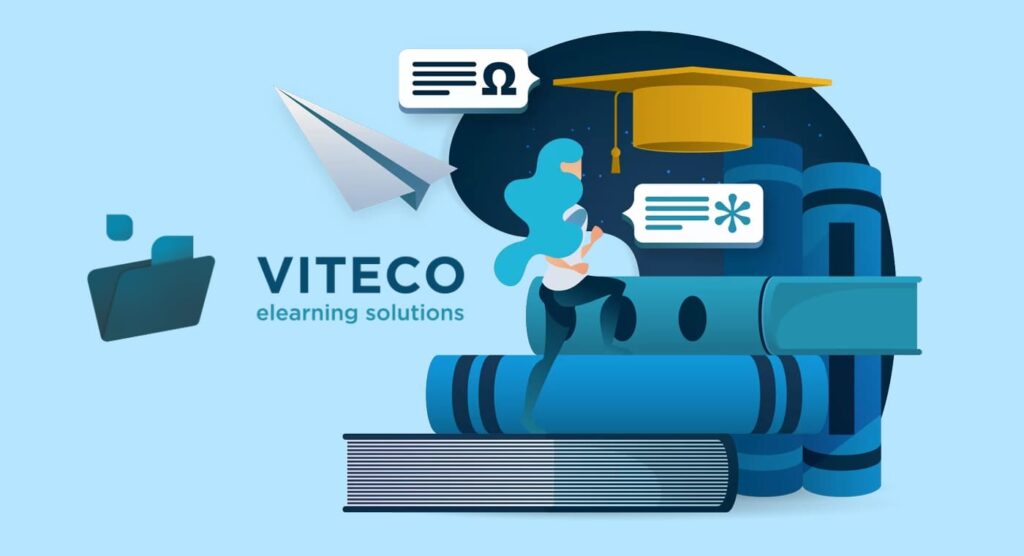Company training is an institution regulated by Italian Law 338 of 2000, according to which companies can apply to INPS for a reimbursement of 0.30% equal to the contributions paid for each individual employee.
The reimbursement is part of the interprofessional funds, also known as “company training plans” or “individual training plans”, whose objective is to improve the skills of resources.
Table of contents
Corporate training: what it is
Corporate training means investing in people in order to improve work performance and achieve growth. Training is aimed at employees and managers and is meant to give them the right motivation to perform their tasks at their best.
The main instrument of corporate training is training courses. Knowing how to organise courses and choosing the right platform to deliver them is half the battle.
VITECO, an ISO 9001:2015 and ISO/IEC 27001:2017 certified company, for example, designs and develops e-learning platforms through which deliver courses of various kinds.
Benefits of corporate training
The “valorisation” of human capital leads to innumerable benefits:
- improves the employee experience. Thanks to corporate training, people feel more valued, socialise and strengthen their bond with colleagues;
- strengthens performance. More skilled employees are better performing employees. Increasing professional skills not only improves self-esteem on a personal level, but also has a direct impact on company growth;
- it decreases the turnover rate. Continuous professional training enables employees to feel more included and supported in their daily activities. This, in theory, should reduce turnover and prevent employees from leaving the company;
- it helps employer branding . Good training could facilitate inbound recruiting, ergo the search for highly qualified professionals.

How to realise a corporate training
Conducting corporate training is not so complicated. For example, if you are an entrepreneur and would like to train new resources, you might consider internships and apprenticeship contracts. The first differ from the second in that they welcome young people up to 29 years of age to whom, afterwards, a certificate of training is issued; the second, on the other hand, are aimed at professionals who need to acquire certain qualifications in order to be able to operate “more actively” within the market. In both cases, these are contractual forms aimed at obtaining new skills.
The training plan
The next step concerns the creation of a training programme; this is used to understand in which areas of the company’s organisational chart personnel need to be trained. It starts with an analysis of the company and its employees’ performance, and then continues with the identification of medium- and long-term objectives.
In short terms, a good training programme needs that:
- the most appropriate training material is chosen for the purpose;
- the format through which it is to be carried out (face-to-face, remote or blended) is approved;
- the most suitable personnel for the training is selected;
- the evaluation system is outlined;
- the number of hours, i.e. the duration of the teaching material is defined.
Corporate training delivery modes
Corporate training is provided in the form of:
- continuous training;
- facilitated training;
- training outside working hours.
Let’s find out about them one by one.
Continuous training
Continuous training refers to a type of training that continues throughout one’s career. In order to implement it, it is necessary for managers to choose to sacrifice a small part of the time dedicated to the production of products/services in favour of time dedicated to training. A strategy that only pays off in the medium-long term.
Facilitated training
We said in the incipit that Italian Law 338 of 2000 allows companies to request a reimbursement from INPS of 0.30% equal to the contributions paid for each individual employee. This is, to all intents and purposes, a case of facilitated training, i.e. a specific “bonus” designed precisely to help public and private employees in their professional development.
Training beyond working hours
It is not the most common form and is most often applied where it is not mandatory. If it is, however, the CEO must provide a “rebalancing” plan for any inconvenience caused.

What VITECO can do for you
As is well known, learning never stops, especially if it comes to the management of a company. This is why SMEs should choose VITECO for the delivery of their online courses.
VITECO, part of the JO Group cluster of companies, develops FAD platforms that are characterised by:
- ease of use;
- customisation;
- no hidden costs;
- excellent facial recognition systems that respect privacy.
VITECO not only supports companies, but also training organisations and schools through the design and production of serious games and conversion to SCORM format.
If you aspire to a future of growth, progress and success, trust us by filling out the contact form below, or continue reading our JOurnal to stay informed.

